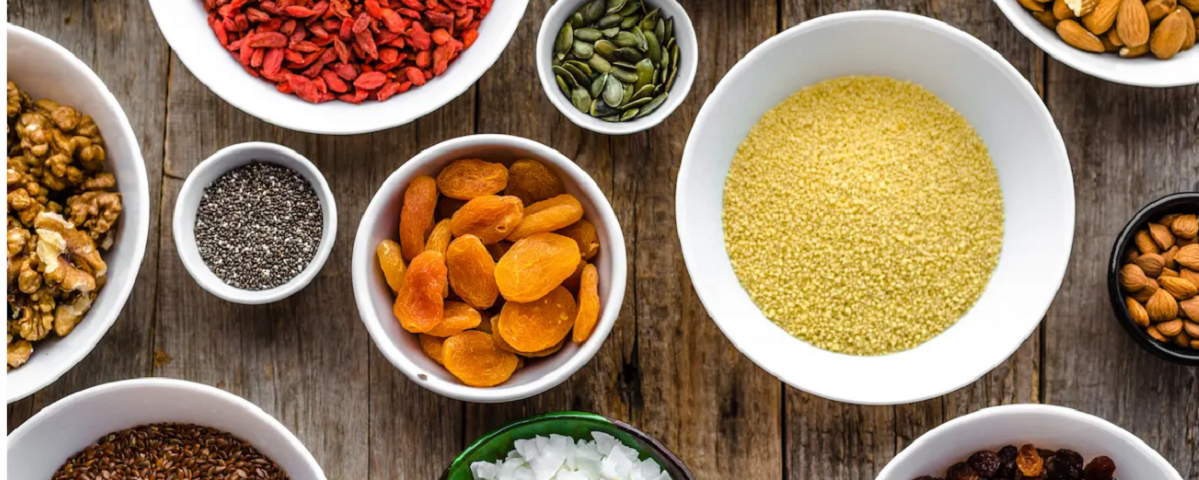Blue Zones Project ApprovedTM Grocery Stores make it easy to add well-being to your shopping list by offering Blue Zones® foods that are enjoyed around the world. Consider adding these ingredients to your pantry to set your kitchen up for healthy eating.
Olive Oil
Olive oil is an essential staple in Mediterranean diets in the Blue Zones region of Ikaria Island in Greece. People who live in these regions of the world have lower risks for heart disease, high blood pressure and cognitive diseases.
Black Beans
Black beans are consumed by people in the Blue Zones region of the Nicoya Peninsula in Costa Rica. They are great sources of fiber, folate, and potassium. Black beans also contain flavonoids that reduce inflammation, prevent heart disease and types of cancer.
Seaweed
Seaweed is a staple ingredient in the Blue Zones region of Okinawa, Japan and can be used in soups, stews, salads, smoothies, and sushi. Seaweed contains iodine and tyrosine which support thyroid function. It iIs high in vitamins and minerals, has a variety of antioxidants, and provides fiber and polysaccharides that support gut health, regulate blood sugar levels and insulin levels.
Honey
Honey is an important ingredient in the Blue Zones region of Ikaria Island in Greece. Unprocessed honey contains bioactive plant compounds and antioxidants, which neutralize reactive oxygen species in the body resulting in premature aging, type 2 diabetes, and heart disease. Compared to regular sugar, honey is a healthier option for maintaining blood sugar levels.
Black-Eyed Peas
This legume is essential to peoples' diets in the Blue Zones region of Ikaria Island in Greece. Black-eyed peas are a great source of plant-based protein and fiber. One cup of cooked black-eyed peas has 13 grams of protein and 11 grams of fiber. In comparison, a white slice of bread has 2 grams of protein and 0.6 grams of fiber. Black-eyed peas are also an excellent source of magnesium which helps muscle and nerve function, energy production, and blood sugar control and management.
Whole Grains
Whole grains are a staple food in the Blue Zones region of Loma Linda, California. Whole grains are high in nutrients and fiber, reduce chronic inflammation, support healthy digestion and are linked to lower risk of heart disease, obesity, and stroke. These health benefits are possible because whole grains contain:
- The Bran: outermost layer which contains fiber, minerals and antioxidants
- The Endosperm: the middle layer of the grain that is made up of carbohydrates
- The Germ: the inner layer that has protein, minerals, vitamins and plant compounds
References
- UCLA Health. Digestive Diseases Nutrition: Food. https://www.uclahealth.org/medical-services/gastro/nutrition/well-being-and-nutrition-tips/food
- Harvard T.H. Chan School of Public Health. The Nutrition Source: Whole Grains. https://www.hsph.harvard.edu/nutritionsource/what-should-you-eat/whole-grains/
- Manian, C. All Beans Are Nutritious, But Black Beans Are Exceptionally Healthy. March 24 2023. https://www.realsimple.com/health-benefits-of-black-beans-7254820
- Harvard T.H. Chan School of Public Health. The Nutrition Source: Seaweed. https://www.hsph.harvard.edu/nutritionsource/seaweed/
- Samarghandian S, Farkhondeh T, Samini F. National Library of Medicine. Honey and Health: A Review of Recent Clinical Research. Published 2017 April. https://www.ncbi.nlm.nih.gov/pmc/articles/PMC5424551/#:~:text=Honey%20has%20a%20potential%20therapeutic,bioactive%20molecules%20present%20in%20honey.
- Joseph, M. Nutrition Advance. Black-Eyed Peas 101: Nutrition, Benefits, Downsides. September 20 2023. https://www.nutritionadvance.com/black-eyed-peas-nutrition/




